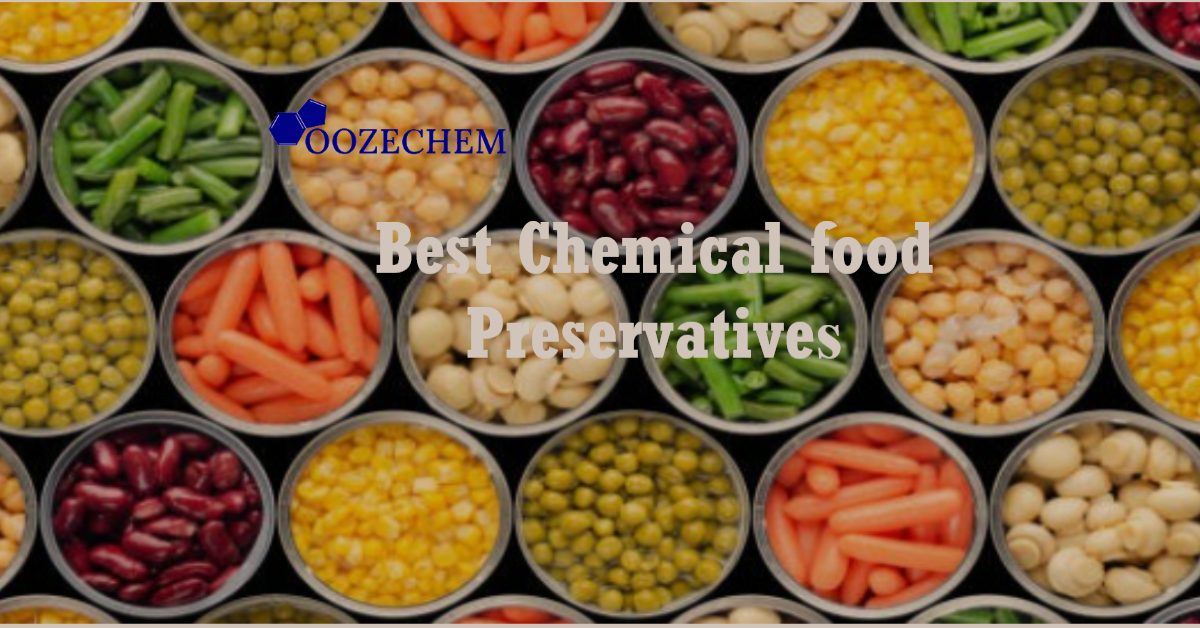The Gulf region’s food industry landscape demands specialized preservation solutions to combat challenges posed by extreme heat, high humidity, and aggressive environmental conditions that accelerate food spoilage. OozeChem, a leading chemical supplier in the UAE, understands these regional demands and provides comprehensive chemical food preservatives solutions, including advanced preservation compounds that support food safety and extending shelf life across diverse food processing applications.
Utilizing the right chemical additives in food preservation across all GCC countries is essential for ensuring food safety, maintaining product quality, and meeting strict regulatory requirements across diverse food manufacturing sectors throughout the region.
OozeChem delivers high-quality food preserving chemicals, including antimicrobial agents, antioxidants, and specialized preservation compounds, to food industries in the UAE, Saudi Arabia, Oman, Bahrain and Kuwait. This ensures food manufacturers throughout the Gulf region have reliable access to the right chemicals used as food preservatives for optimal preservation, quality maintenance, and extended shelf life in challenging climatic conditions.
What Are Chemical Preservatives in Food?
Chemical preservatives in food are substances added to prevent microbial growt enzymatic change and oxidation. These food preserving chemicals range from simple salts to complex organic compounds. They inhibit harmful bacteria and fungi helping maintain food’s safety and quality.
Common examples include:
- Sodium benzoate and potassium sorbate are effective against yeasts and molds.
- Nitrates and nitrites help preserve cured meats and inhibit Clostridium botulinum growth.
- Sulfites are widely used in dried fruits and wines to prevent browning and spoilage.
Each of these chemicals used as food preservatives targets specific spoilage mechanisms making them valuable tools in food processing.
How Food Preserving Chemicals Protect Your Food
Antimicrobial Action
By disrupting the metabolism of spoilage microorganisms these chemical preservatives in food limit bacterial and fungal growth. For instance sodium benzoate is commonly used in acidic foods like sodas and salad dressings.
Antioxidant Properties
Oxidation leads to flavor rancidity and nutrient loss. Compounds like BHA (butylated hydroxyanisole) and BHT (butylated hydroxytoluene) scavenge free radical thus preserving flavor and color.
pH Regulation
Certain chemical additives in food preservation contain acidic or alkaline components that change the pH of foo discouraging microbial development.
Moisture Control
Salt and sugar classic food preserving chemicals draw out moisture through osmosis creating inhospitable environments for bacteria.
What Chemicals Are Used as Food Preservatives? A Detailed Look
- Benzoates (e.g sodium benzoate) commonly used in beverage sauce and pickles.
- Sorbates (e.g potassium sorbate) ideal for baked good cheese and some beverages.
- Nitrites/Nitrates preserve meats like bacon and ham as well as giving cured meats their distinct color and flavor.
- Sulfites used in wine dried fruit and some vegetables to prevent discoloration and microbial growth.
- Propionates are regularly added to baked goods to discourage mold.
- Chemical antioxidants (BHA/BHT/ascorbic acid) used in snack oil and fatty foods to prevent rancidity.
These chemicals used as food preservatives are carefully regulated to ensure they remain within safe intake levels.
Balancing Safety Health and Shelf Life
While chemicals and preservatives in food have been scrutinized by consumer regulatory authorities like the FDA and EFSA continually monitor their safety. Acceptable daily intake (ADI) levels are determined and products must adhere to strict compliance. Consumers concerned about artificial additives can seek out “preservative-free” or “clean label” products which rely on natural preservation techniques.
It’s also important to note the difference between safe approved preservatives and speculative claims linking them to health risks. Scientific studies back the use of many chemical food preservatives confirming their role in preventing foodborne illnesses and waste.
Innovations in Food Preservation
Modern research focuses on improving the effectiveness of food preserving chemicals while reducing quantities needed. Emerging technologies combine natural antimicrobials such as essential oil with traditional chemical preservatives in food achieving synergistic protection. Nanotechnology and edible coatings also show promise for delivering controlled-release preservatives directly on food surfaces.
Conclusion
Chemical food preservatives continue to play a vital role in food safety quality and waste reduction. By understanding what chemicals are used as food preservatives and how they function consumers can make informed choices. Advances in food science ensure that chemical additives in food preservation remain effective and safe preserving both nutrition and flavor.
